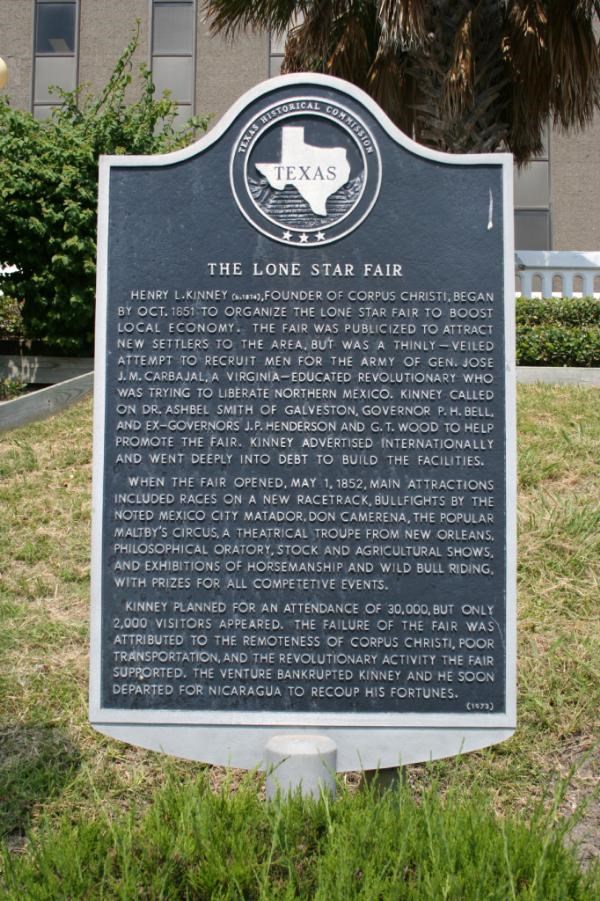Corpus Christi in 1852 was a frontier town with its businesses mainly located on the beach, and residences scattered along a high bluff behind. Land in the vicinity was extremely fertile. Regions of timber grew nearby, surrounded by vast stretches of grassy prairie that abounded with wildlife.
Despite this seeming paradise, Colonel Henry L. Kinney, one of the founders of Corpus Christi and a major landholder in the area, became increasingly concerned that the region was still undiscovered by most Texans. A born opportunist and promoter, Kinney developed the idea that a State Fair hosted in Corpus Christi would attract thousands of visitors and give the town the exposure it needed. With his magnetic personality, Kinney was able to interest many of the state’s best-known citizens in the project. Among them was Dr. Ashbel Smith, who accepted Kinney’s invitation to serve as manager of the fair.
The Lone Star Fair, as it came to be known, was promoted heavily. Some twenty thousand circulars were sent to all parts of the world, promising lavish entertainment and luxurious accommodations, in addition to generous terms for the purchase of land, stock, and furnishings needed to settle in the area. Attractive prizes were to be awarded to encourage competitive displays and quality agricultural entries at the fair. Each prize bore the inscription “From H. L. Kinney and General Committee of the Lone Star Fair, Corpus Christi, May 1852”, along with the name of the recipient.
The festive setting and spirit of competition was apparently all the inducement needed by many of the ranchers, planters, and inventors from around the state to participate in the event. Kinney himself took top honors in the category of “Stallion, 5 years old or upward.” Gail Borden, Jr., who would later become famous for his invention for processing condensed milk, was awarded first prize for a specimen of his earlier but less successful invention, a dried “meat biscuit.” And William P. “Old Gotch” Hardeman, a prominent planter on the San Marcos River in Caldwell County, entered and won first prize for “finest sugar.”
The fair was billed as an annual event, and at its conclusion, a General Committee for the Fair of 1853 was selected. However, mixed reviews in the press and heavy financial losses suffered by Kinney doomed the chances for any follow-on occurrences. The first in the time-honored series of state fairs now held in Dallas would not begin until seven years after the Corpus Christi event.
An incident in the final hours of the fair underscored the rough and untamed behavior often encountered at public events in those early days of Texas. As remembered by John “Rip” Ford decades later, Ford was threading his way homeward when he heard a pistol shot. He raised his eyes, saw a man falling to the ground, and a woman not far away in the act of lowering her six-shooter. She was the noted character, Sally Scull, whom Ford said “prudent men did not willingly provoke into a row.” On this occasion, however, Scull was apparently justified in what she did, having acted in self-defense.
References:
H. L. Kinney to A. Smith, March 17, 1852 (MS., Ashbel Smith Papers, Barker Library, Austin)
Hortense Warner Ward, The First State Fair of Texas, The Southwestern Historical Quarterly, Vol. LVII, No.2, October, 1953.
New Orleans Daily Delta, May 20, 1852
